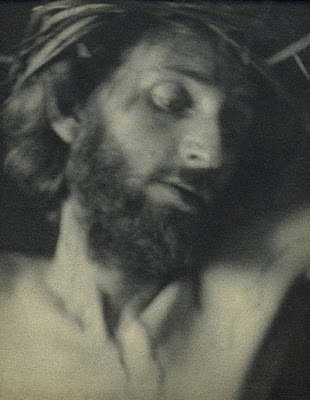De 1895 a 1898, Holland Day llevó a cabo un proyecto sin precedentes: una gran serie de 250 negativos que mostraban escenas de la vida de Cristo. Desde la Anunciación a la Resurrección, en los cuales el propio Holland Day desempeñó el papel protagonista. En 1890 Holland Day había viajado en Oberammergau para ver la representación de la Pasión y quizás habría visto una presentación multimedia similar que recorrió la costa este, incluyendo Boston. Para su propia producción, Day se murió de hambre, se dejó crecer la barba e importó trapos y una cruz de Siria. El resultado fue esta serie de autorretratos: Las imágenes más poderosas de toda su serie, son sin lugar a dudas "las siete últimas palabras de Cristo"
Pater dimitte illis, non enim sciunt, quid faciunt (Lucas, 23: 34)
Amen dico tibi hodie mecum eris in paradiso (Lucas, 23: 43)
Mulier ecce filius tuus [...] ecce mater tua (Juan, 19: 26-27)
¡Elí, Elí! ¿lama sabactani?" - Deus meus Deus meus ut quid dereliquisti me (Mateo, 27: 46 i Marc, 15: 34).
Sitio (Juan, 19: 28)
Consummatum est (Juan, 19: 30)
Pater in manus tuas commendo spiritum meum (Lucas, 23: 46)
Edward Steichen va afirmar:
"Few paintings contain as much that is spiritual and sacred in them as do the ‘Seven Words’ of Mr. Day. . . . If we knew not its origin or its medium how different would be the appreciation of some of us, and if we cannot place our range of vision above this prejudice the fault lies wholly with us. If there are limitations to any of the arts, they are technical; but of the motif to be chosen the limitations are dependent on the man—if he is a master he will give us great art and ever exalt himself."
F.Holland Day (1864-1933)
+ Información
https://artblart.com/
https://www.metmuseum.org/









No hay comentarios:
Publicar un comentario